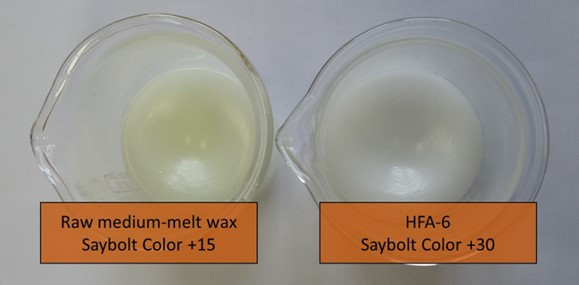FT2Chemicals - Upgrading FT Products for Industry
Synopsis:
Fischer-Tropsch (FT) synthesis is capable to convert renewable syngas (CO and H2) to hydrocarbons and thus, provide commodities like high quality diesel fuel, kerosene and basic chemicals. The synthesis of high molecular hydrocarbons (C20+), commonly known as waxes, from renewable feedstock was investigated in the course of this project. Paraffin waxes is a highly priced basic commodity which is used in in different industries such as the pharmaceutical industry, the rubber industry, the candles, the bitumen industry, the hotmelt industry and many more. In most of the mentioned applications wax is subjected to strict regulations regarding its physical and chemical properties (e.g. normal- to iso-paraffin ratio, olefins content, molecular distribution, oxygenate content, inorganic residues, colour,…..).
Aims and objectives:
The main goal of this project was to refine raw renewable paraffin wax synthesized via low temperature Fischer-Tropsch synthesis to achieve commercial product quality.
Thus, different separation techniques to remove fine catalyst particles from wax were tested at laboratory scale
Hydro-treating (hydrofining) test runs were performed with the aim to adjust chemical and physical properties to different commercially demanded levels
Process intensification; identify if such waxes could be produced at commercial-near production parameters
Results:
In the course of the project, biomass-based Fischer-Tropsch waxes were fractioned, refined and analyzed with the aim to achieve commercial standards. A commercial sulfide NiMo-Al2O3 catalyst was applied to perform the hydrofining test of paraffin waxes. It could be shown that the produced medium-melt paraffin wax fully complied with the requirements of “Paraffinum solidum” defined by the European Pharmacopoeia (Ph. Eur). The obtained high-melt wax fraction has the potential to be used as food packaging additive. Additionally, the hydrofined waxes were quasi-PAH-free. Furthermore, a comprehensive literature review of possible ways for the fine catalyst particles separation was performed.
A main outcome of the project is the insight that biomass-based Fischer-Tropsch waxes could be integrated into the refinery process using standard refining catalysts. The results of hydrofining experiments can be found in "A novel production route and process optimization of biomass-derived paraffin wax for pharmaceutical application." (see below)
Projektvolumen
EUR 180.000,--
Projektlaufzeit
2018-01-01 - 2019-03-31
Supported by
FFG, COMET
Projektpartner
- BEST - Bioenergy and Sustainable Technologies GmbH
- Hansen & Rosenthal Ölwerke Schindler GmbH
- Bilfinger Bohr- und Rohrtechnik GmbH
- Vienna Universita of Technology
Contact
Area Management

Matthias Kuba
matthias.kuba@best-research.eu

Gerald Weber
gerald.weber@best-research.eu

